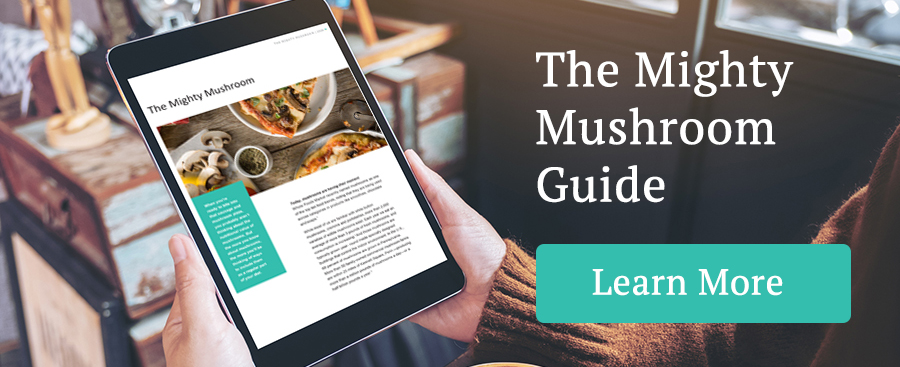If you had to define mushroom, what words would you use? An exceptional culinary element, mushrooms are extraordinarily versatile. Edible mushroom species, such as oyster and Portobello mushrooms, have endless uses in the kitchen. In contrast, inedible mushrooms can be turned into vegan leather, added to skincare products, and have even been tested as an alternate source of electricity.
But what exactly is a mushroom? Mushrooms are technically fungi and not plants, although some would argue anything that grows organically could be a plant. Scientifically, plants are in a separate category. Mushrooms provide multiple functions both in nature and as food. Learn all about mushrooms and how they promote good health.
Is Mushroom a Fungi Similar to Mildew?
All mushrooms are fungi, but mushrooms are not like mildew or other types of fungi. Mushrooms belong in the kingdom Fungi, which boasts more than 144,000 known species and includes mold, yeasts, and rusts. Some mushrooms are edible and safe to eat, while others pose a great risk of harm if consumed or touched.
Mushrooms are typically found near plants and may even use plants for stability as they grow. Sometimes considered a plant due to their edible nature, mushrooms are not part of the kingdom Plantae and, therefore, are not plants.
So, is a mushroom a plant or not? The reason why mushroom is not a plant requires a dive into its development and proliferation.
The Difference Between Mushrooms and Plants
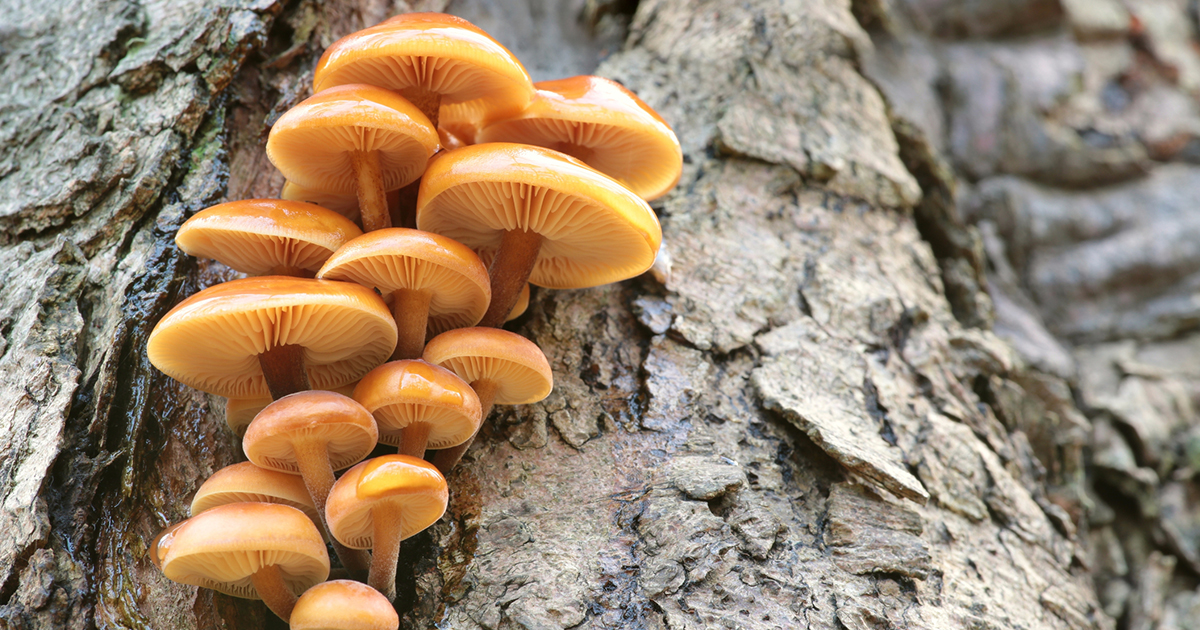
Regardless of the type of mushroom, one thing is certain: The process by which mushrooms develop is fascinating. Look at some of the key differences between mushrooms and plants.
What Is Mushroom an Example Of?
Mushrooms are heterotrophs. This means they rely on food sources in their surroundings for nutrients, such as animal waste, plant matter, and organic carbon. A mushroom’s source of food differs from plants because plants are autotrophic, or capable of creating their food from simple organic compounds.
Cellular Structure: Mushrooms vs. Plants
Both mushrooms and plants have cell walls, but their difference lies in its composition. The cell wall of a plant is composed of cellulose, while the cell walls of a mushroom are created from complex polysaccharides: glucan and chitin. A mushroom’s cell wall protects it from predators and enhances its structural integrity.
How a Mushroom Consumes Nutrients
Mushrooms are dissimilar to plants in the way they consume food as well. Plants contain chlorophyll and undergo photosynthesis to sustain growth, but mushrooms don’t function the same. Before nutrients can penetrate the cell wall, they must be digested. This means mushrooms are opposite humans in that their food must be digested before taking in nutrients. In this respect, only bacteria are like mushrooms, as their nutrient intake method is the same.
Mushroom Reproduction
If humans are examples of mammals, you may be wondering, “What is a mushroom an example of?” Like humans, mushrooms can produce sexually, which occurs when the spore of one mushroom meets with the spore of another, and a new mushroom is formed. However, mushrooms can also produce asexually. Sexual reproduction leads to greater genetic diversity in mushrooms.
Asexual reproduction involves fragmentation or budding of the mushroom, wherein the mushroom essentially copies itself. The recognizable cap of a mushroom, the part typically used in cooking, is vital to reproduction, as spores found in the gills (slits located under the cap) help create new mushrooms.
Mushrooms, for the most part, belong to either the Basidiomycota or Ascomycota phyla. Basidios are more common than ascos, as the former includes all mushrooms with gills. Ascos mushrooms feature a cup-like cavern in which the spores are contained.
How and Where Do Mushrooms Grow?
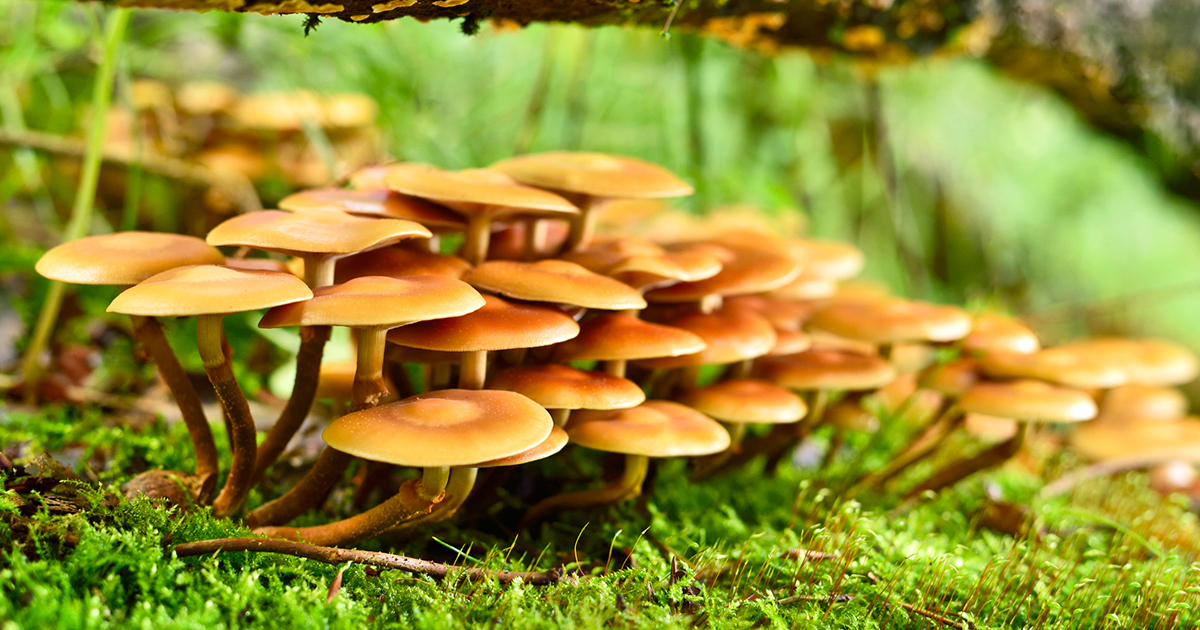
The best growth conditions for a mushroom depends on the species, but mushrooms typically do best in cool, damp areas that are rich in available nutrients. Locations where you might find wild mushroom growth include the base of trees, under pieces of wood, and gardens. Mushrooms can be further classified into types by growth patterns and preferred nutrients.
There are three main types of mushrooms:
- Saprotrophic mushrooms. These mushrooms feast on dead and decaying matter while they aide in the decomposition process. Saprotrophic mushrooms release special enzymes that encourage the deterioration of organic matter. Shiitake, morels, oyster, and button mushrooms all belong to the saprotrophic category of mushrooms.
- Parasitic mushrooms. Some fungi are designed to feed off other plant life. Detrimental to the host plant, parasitic mushrooms provide no benefit to its host. Examples of parasitic mushrooms include chaga and lion’s mane.
- Mycorrhizal mushrooms. This type of mushroom gives and receives benefits from other plants. The mycelium is often supported by and dependent upon the roots of other plants for structure. Mycorrhizal mushrooms also help hydrate a plant that provides sugars to return the favor. In this symbiotic relationship, both the mushroom and plant can grow stronger and larger. Mushrooms in this group include porcini mushrooms and truffles.
Common Mushroom Characteristics
Appearance, location, and supporting structure are the easiest mushroom characteristics to recognize.
A few of the most common mushrooms include:
- Stalk-and-cap appearance. The most recognizable, mushrooms with stalk and cap contain many edible varieties, such as the button mushroom and portobello mushrooms. Unfortunately, poisonous mushrooms, such as the Amanita bisporigera or “destroying angel,” also have a cap and stalk, making it difficult to discern edible mushrooms from their dangerous counterparts.
- Mycelium. This is the actual fungus from which what we refer to as mushrooms form. A single mushroom can be tied to a vast underground mycelium that spans acres. To date, the largest mycelium found was in Oregon and is said to permeate 1,500 acres of land.
- Spores. All mushrooms produce spores, but the fate of the spores differentiates types of mushrooms from one another. Some mushroom spores are fertilized sexually, while other spores need to land nearby to produce a new mushroom.
- Bowl-like or planked, wavy appearance. Not all mushrooms follow a typical shape, and spherical mushrooms, like the edible puffball mushroom, demonstrating great physical differences in the mushroom world. Other mushrooms, such as those seen creeping up the side of a tree, are planked and sometimes wavy in shape. A popular example is the oyster mushroom, which is often found growing on dead tree trunks or the bark of birch trees.
- Unique mushrooms. Some mushrooms are simply unique in appearance and don’t fit the mold of your typical button mushroom.

Morel mushrooms, for example, have been described as having flesh that looks like a tiny tree or a small brain.
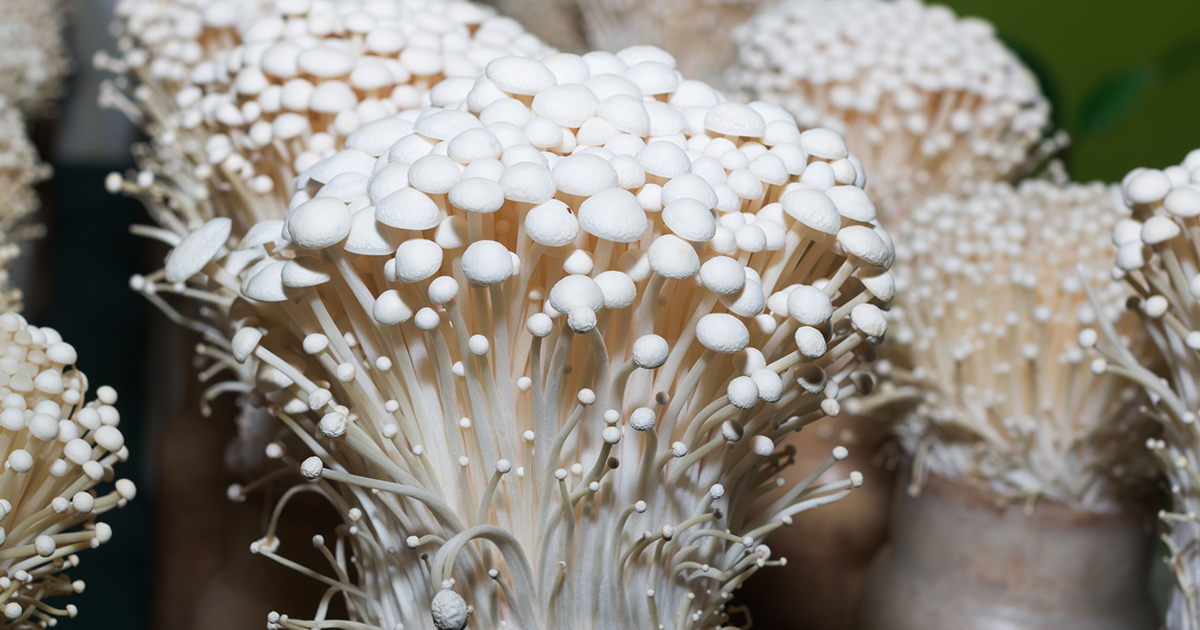
Another unique mushroom and signature ingredient in Japanese cuisine is Enokitake. This type of mushroom is technically a cap-and-stalk variety; however, the stems are so long compared to the small-cap that a bunch of Enokitake resembles a handful of straw.
Do Mushrooms Live Underwater?
There are some places you wouldn’t think mushrooms would be found. When you ask, “Where are mushrooms found?,” the answer you least expect is underwater. To date, only about 3,000 species of aquatic fungi have been found. Until reported in the journal Mycologica in 2010, it was thought that there were no underwater mushrooms except for mushrooms growing on the occasional submerged piece of wood. Psathyrella aquatica, discovered in Oregon, is the first gilled mushroom found to grow and flourish underwater.
Nutritional Benefits of Mushrooms
A low calorie, nonfat food, mushrooms are both versatile and nutritious. Flavors of mushrooms range from light and airy to pungent and full-bodied, which encourages chefs to find new ways to incorporate them into their favorite dishes. Browse some of the most important vitamins, and minerals mushrooms provide.
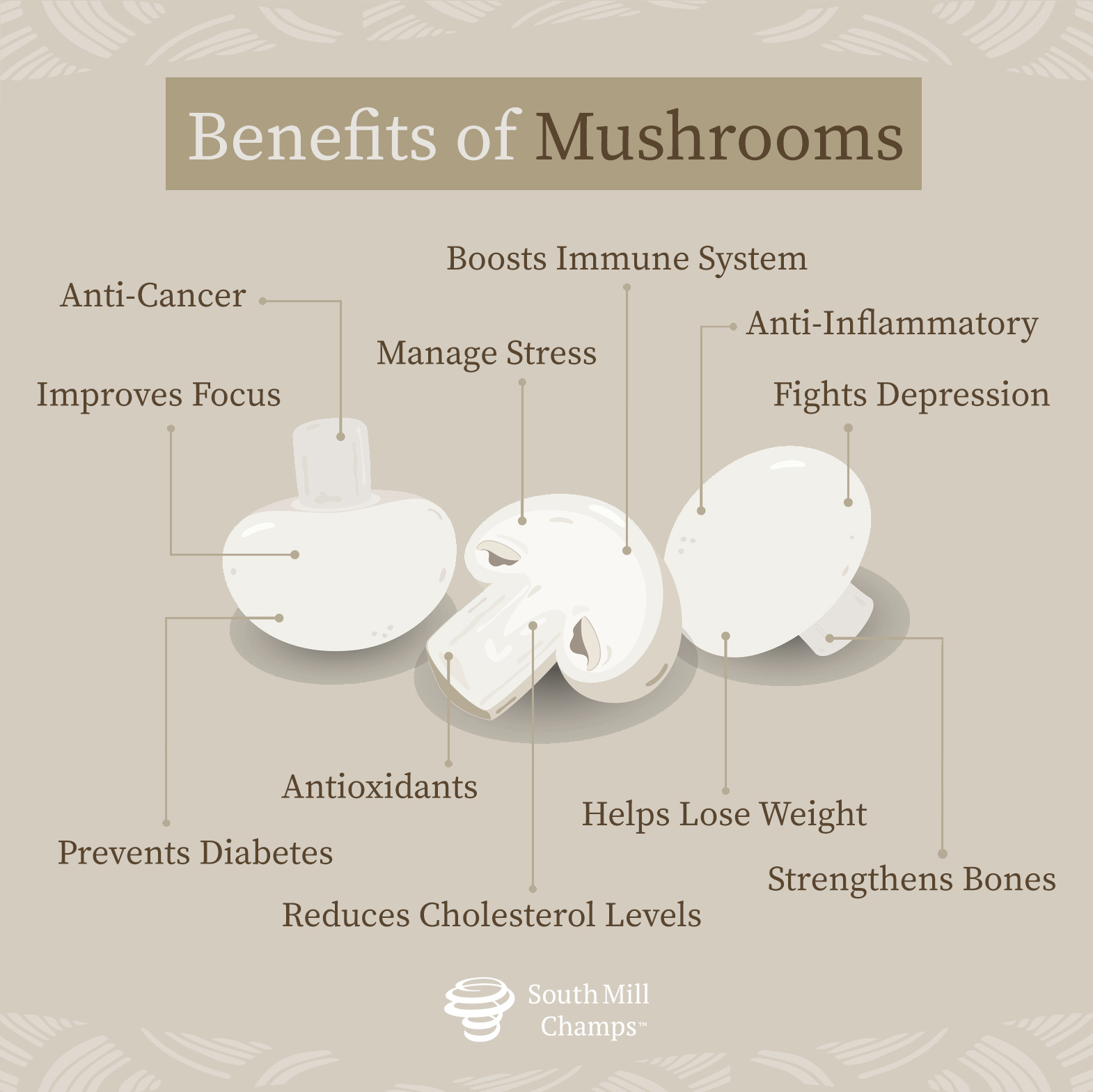
Antioxidants
For people suffering from an injury or those with inflammation disorders, mushrooms are an important addition to the diet. Two powerful antioxidants, selenium and ergothioneine, are found in mushrooms and impart anti-inflammatory benefits when consumed.
B Vitamins
Often under-consumed, B vitamins are responsible for a variety of tasks in the body. They reduce inflammation, promote heart health, and fortify the body’s immune response. Mushrooms contain significant amounts of B vitamins, including riboflavin, pantothenic acid, and niacin.
Potassium
Welcome news for diabetics or those with sugar-related disorders, mushrooms contain a large amount of potassium. Potassium is involved with many processes within the body, including nerve signals, muscular contractions, and internal fluid balance. A medium-sized banana can be replaced with two-thirds of a cup of mushrooms for the same potassium boost without the additional sugar.
Vitamin D
Typically acquired via the skin’s exposure to sunlight, vitamin D is rarely found in foods but is an absolute necessity for your bones. Foods containing vitamin D, such as fish or dairy products, may be restricted for those on a special diet. Mushrooms’ significant vitamin D content augments your intake of vitamin D from the sun (without the need to wear SPF).
Beta Glucan
Found in the cell wall of mushrooms and other fungi, beta glucan is believed to enhance immune response, improve cholesterol, and support heart health. Mushrooms are a good source of beta glucan. Other sources include baker’s yeast and whole-grain oats or barley. Researchers continue to study beta glucan as its ability to prolong life in cancer patients is promising.
Phytochemicals
A group of beneficial chemicals found in raw produce, phytochemicals have been shown to impart anti-aging and anti-cancer benefits. Some of the phytochemicals found in mushrooms include alkaloids, flavonoids, glycosides, and phenols. It is believed that these phytochemicals help the body ward off toxins, recover from illness, and alleviate pain.
10 Most Popular Edible Mushrooms
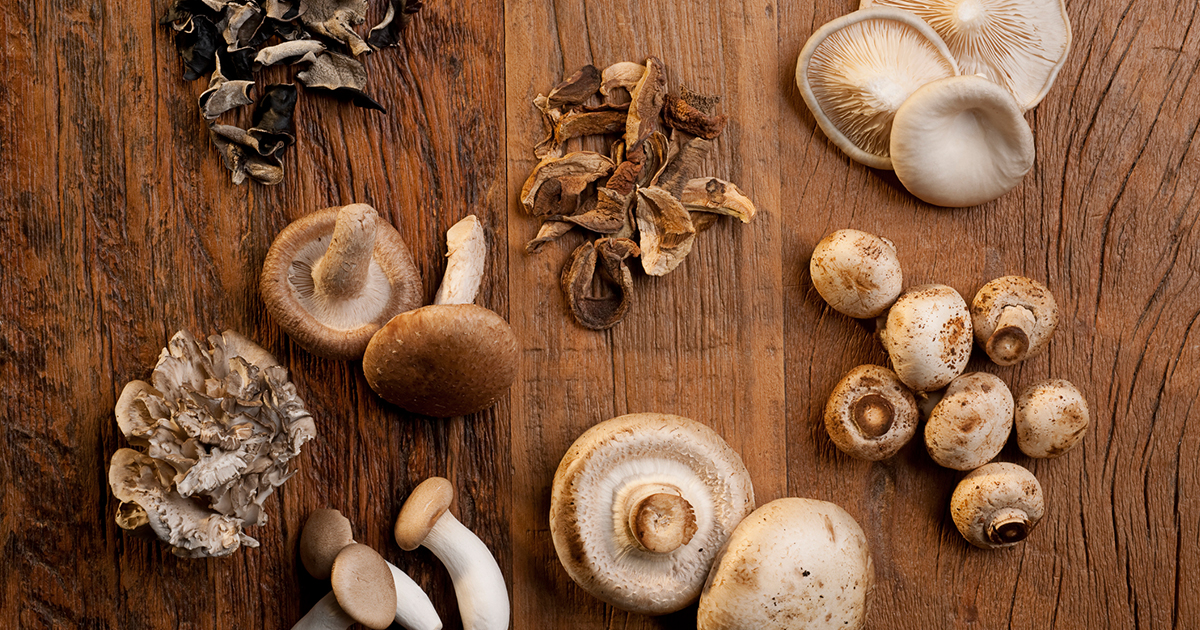
Edible mushrooms are delicious, nutritious, and add texture to any dish.
Explore some of the most popular edible mushrooms:
1. White button
2. Cremini
3. Portobello
4. Shiitake
5. Chantarelle
6. Porcini
7. Enokitake (also called Enoki)
8. Lion’s mane
9. Morel
10. Shimeji
The Mighty Mushroom: Is There Anything It Can’t Do?
From coffee to energy and vegan leather to medicine, mushrooms are jacks-of-all-trades that can be tested and applied in various industries. Added to your entree? A topper for a salad? Crispy mushroom snacks? Discover your favorite way to eat nutrient-packed mushrooms today.
Want to learn more about these edible fungi? Check out our in-depth guide on the Mighty Mushroom!
